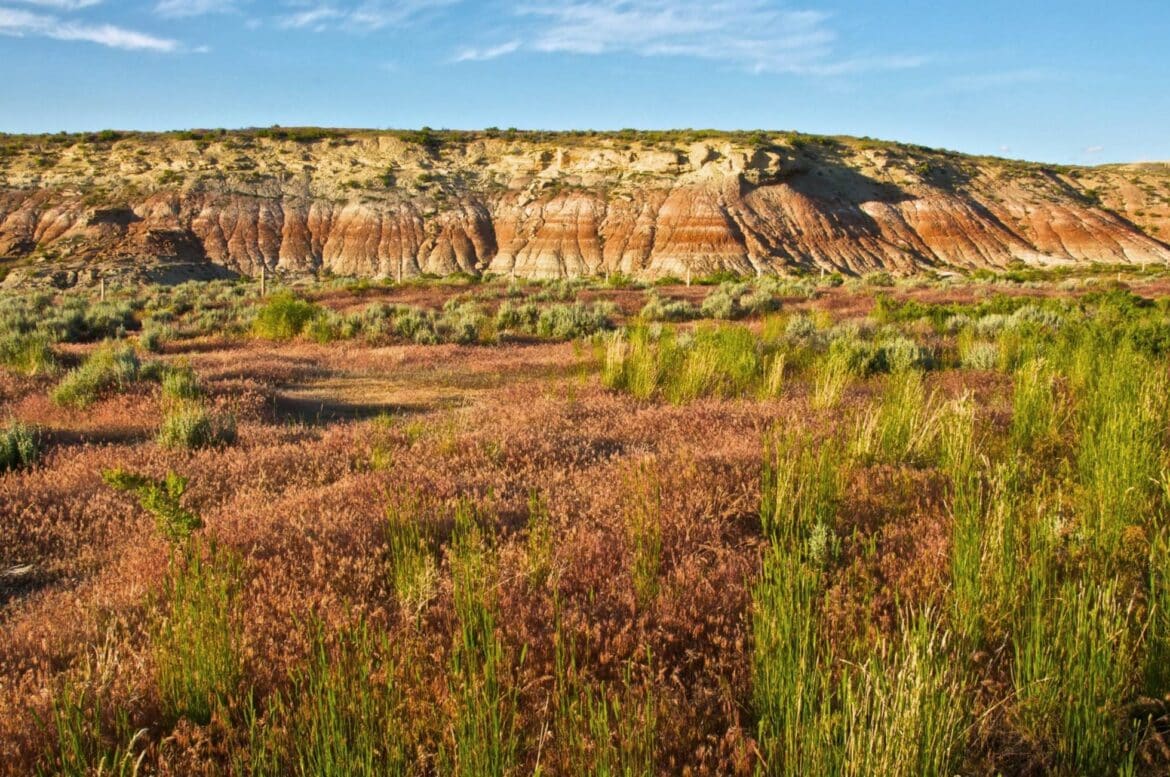RAWLINS, Wyo.—The Bureau of Land Management’s Rawlins Field Office, in coordination with Carbon County Weed and Pest Control District (CCWP), plans to implement cheatgrass treatments on BLM-managed and associated partner lands in June, July, and potentially August 2025. Treatments will only proceed if weather and other required conditions meet application guidelines.
Aerial application of the herbicide indaziflam (trade name Rejuvra) may occur in the following project areas to help reduce invasive cheatgrass and support healthy native vegetation:
Upper Platte Valley:
Treatment areas include lands with mixed ownership in the Prospect Mountain, Blackhall Mountain, and Encampment River areas. The BLM-managed portions of the project cover approximately 40,000 acres mixed ownership. Within that, about 10,500 acres of cheatgrass infested foothills and rangelands will be treated.
These projects aim to manage and remove cheatgrass, an invasive, non-native, early-season annual grass from rangelands to remove competition to important native forage and browse. Cheatgrass, if left untreated and unmanaged, will continue to increase and proliferate to the point that it dominates large areas and becomes a monoculture. It matures and cures rapidly in the spring and early summer, becoming a highly flammable fuel bed that carries swift-moving wildfire events through large swaths of native vegetation. After disturbance, it re-establishes quickly, once again fueling fire events during the hot summer season, which doesn’t allow for native plants like bunchgrasses and bitterbrush to reestablish and flourish. It offers little to no forage value for livestock or wildlife.
Cheatgrass treatments also help reduce hazardous fuels in the wildland-urban interface, including threats to industrial energy infrastructure. These efforts improve vegetation conditions in critical big game habitat and enhance forage availability for livestock.
All BLM vegetation treatments follow stringent authorization and permitting procedures. They are implemented only after environmental review which incorporates project design features and mitigation measures intended to ensure that objectives can be met with minimal impacts to other resources. Strict adherence to the pesticide label restrictions and instructions is followed as required by law. A pesticide use proposal is followed which emphasizes public, applicator, and environmental safety as the first and highest priority. As with any activity involving vegetation treatments, risk cannot be completely removed, but the planning and authorization process mitigates as much risk as possible.
During operations, aircraft used for herbicide application—primarily helicopters and possible fixed wing planes—will be visible at low altitudes within and near the project area boundaries. Permit holders, oil and gas field personnel, recreationists, and other public land users are urged to be aware of treatment operations.
For more information, contact Carbon County Weed and Pest Supervisor Reese Irvine at 307-324-8001; Rawlins Field Office Rangeland Management Specialist Mike Murry at 307-328-4253, or High Desert District Fuels AFMO Chris Otto at 307-328-4250, or visit https://www.blm.gov/wyoming.
###
BLM


